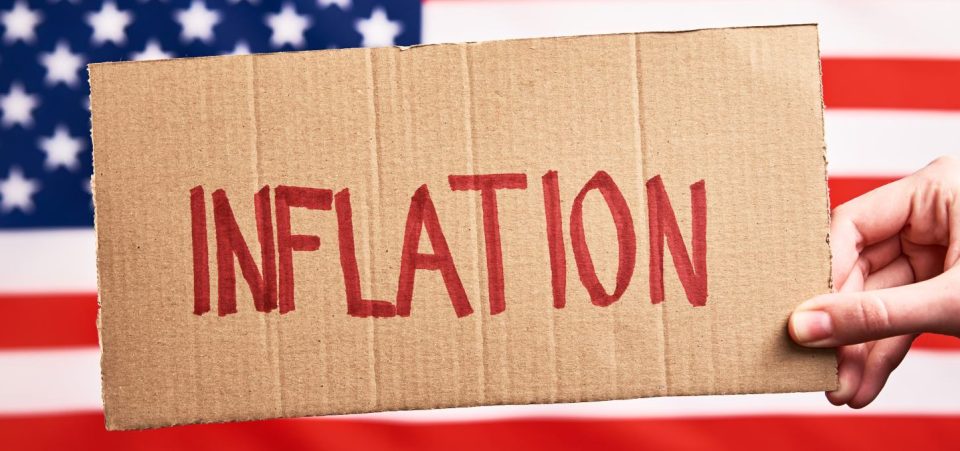Inflation Could Take a Long Time to Come Down
At this point, you might be tired of hearing about inflation in the U.S. economy. Don’t for a second think all the noise around high prices will end any time soon. Sadly, it could take many months for things to become smooth, and there could be a major crisis brewing.
Mark my words, the Federal Reserve and mainstream economists keep talking about a two-percent inflation-rate mandate. For the economy to get there, interest rates would have to go much higher, and it could take a while for inflation to go down to the target range.
Before going into detail, here are some basics and background.
The textbook definition of inflation states that, when there’s a higher money supply, it leads to higher prices. There’s more to it, though. In fact, inflation arrives when things get out of hand once that high money supply starts moving around in the economy.
Here’s a classic example: in 2009, after a financial crisis started, the Federal Reserve printed money but kept that new money supply tightly controlled; it stayed within the Federal Reserve and other banks. Inflation during that time didn’t get out of hand.
In 2020, during the COVID-19 pandemic, the Federal Reserve printed money once again and the U.S. government gave money to the American people to spend on essentials. That was a different situation than the 2008–2009 Great Recession. Money moved around in the U.S. economy as consumers bought things, which caused a spike in prices, i.e. inflation.
According to the consumer price index (CPI), inflation was 8.3% in the U.S. in the 12 months ending August. Moreover, August marked the 27th consecutive month during which prices increased in the U.S. economy. Looking at inflation from a historical perspective, it currently hovers at its highest level in 40 years. (Source: “Consumer Price Index – August 2022” U.S. Bureau of Labor Statistics, September 13, 2022.)
What’s Being Done to Fight Inflation?
The Federal Reserve has two major mandates: keep prices in the U.S. economy stable and improve labor market conditions. The central bank tries to fulfill these mandates by controlling interest rates and through open market operations such as quantitative easing and quantitative tightening.
The Federal Reserve was initially complacent about the recent inflation, but not too long ago, it changed its rhetoric. Now the Fed is trying to curb inflation as fast as it can. Over the past few months, it has raised its interest rates and has started to reduce the size of its balance sheet. The hope is that, as interest rates go higher and the money supply gets reduced, demand in the U.S. economy will come down and, ultimately, prices will also come down.
Misconceptions About Inflation
As the Federal Reserve tries to tame inflation, there’s a misconception that prices will come down as fast as they went up. Sadly, this is nothing but wishful thinking. It could take a very long time for inflation to come down.
The Fed could be forced to raise interest rates further before there’s a meaningful decline in demand and prices. It wouldn’t be wrong to say the Fed might have to break the back of the U.S. economy before inflation gets under control.
Go back and look at what happened in the 1980s when the U.S. economy was experiencing a high rate of inflation. It took a lot of time for inflation to go down, even with forceful interventions by the Federal Reserve.
The Problem
Dear reader, we’re standing at an inflection point, and if you thought the financial markets have been volatile so far in 2022, things could get a lot worse in the coming months and quarters.
There’s one big problem regarding inflation that wasn’t a huge factor back in the 1980s: debt. The U.S. economy is extremely leveraged. Since the financial crisis of 2008–2009, there’s been a severe addiction to debt. Consumers and businesses both have a lot of debt. There’s no rocket science here: debt gets affected by interest rates.
The Federal Reserve continuing to raise interest rates could create a crisis of biblical proportions. Will those who have lots of debt be able to handle higher interest rates for an extended period? If businesses and consumers have a hard time paying their debts, it could become a huge problem for banks and other institutions that hold credit.
If businesses can’t access loans at low interest rates, their profits will shrink. This will ultimately lower stock prices. If this becomes a widespread phenomenon, the overall stock market will get hurt. Furthermore, lower profits could force businesses to lay off employees. Layoffs have already begun.
All of this creates major headwinds for the U.S. economy. We’ve already had a few quarters of negative economic growth recently. One has to wonder how many more quarters of negative growth could be ahead for the U.S. economy.
The longer that inflation persists and the higher that interest rates go, the higher the odds of a major economic and financial crisis. This time, the crisis could be a lot bigger than in 2008–2009.






